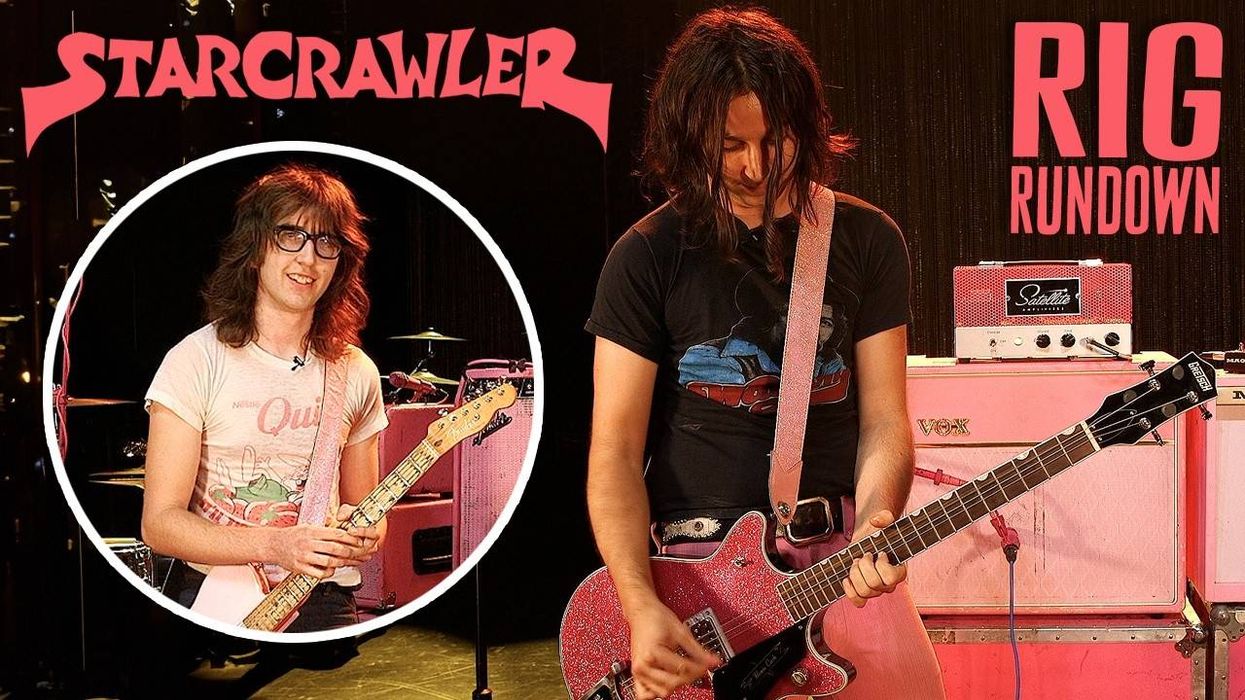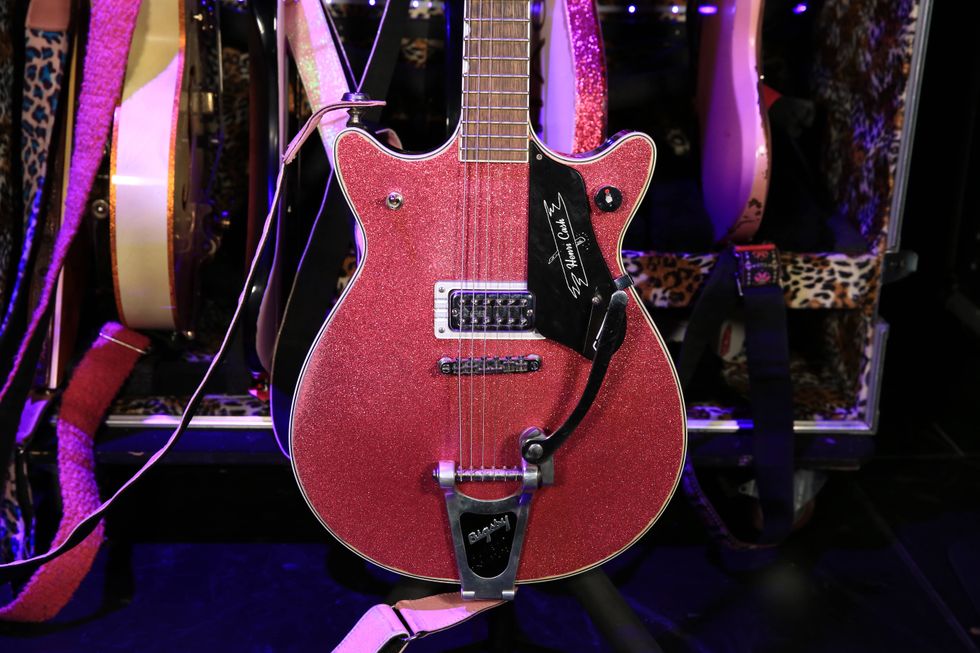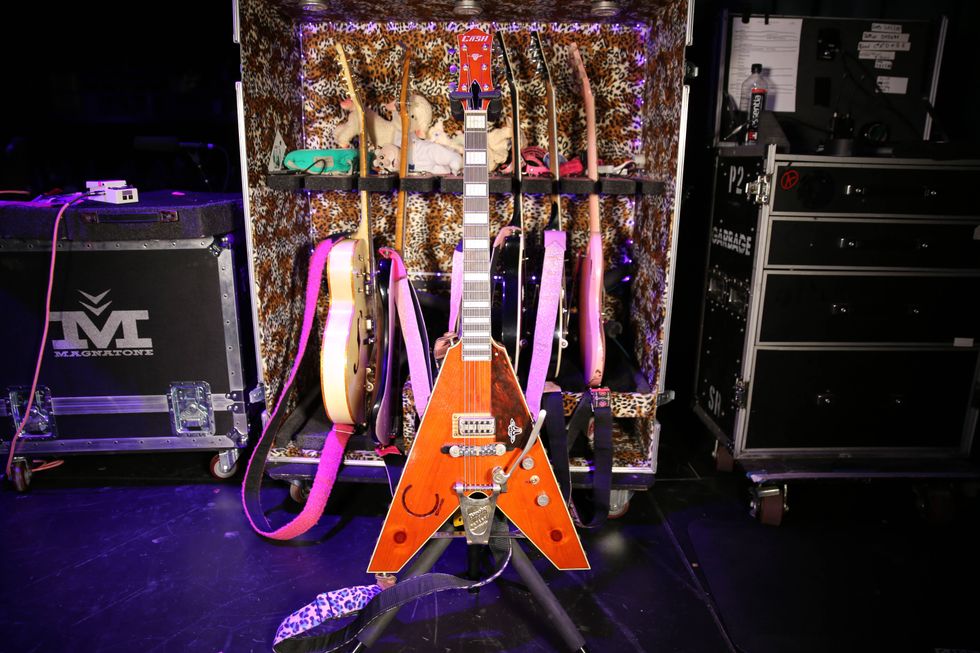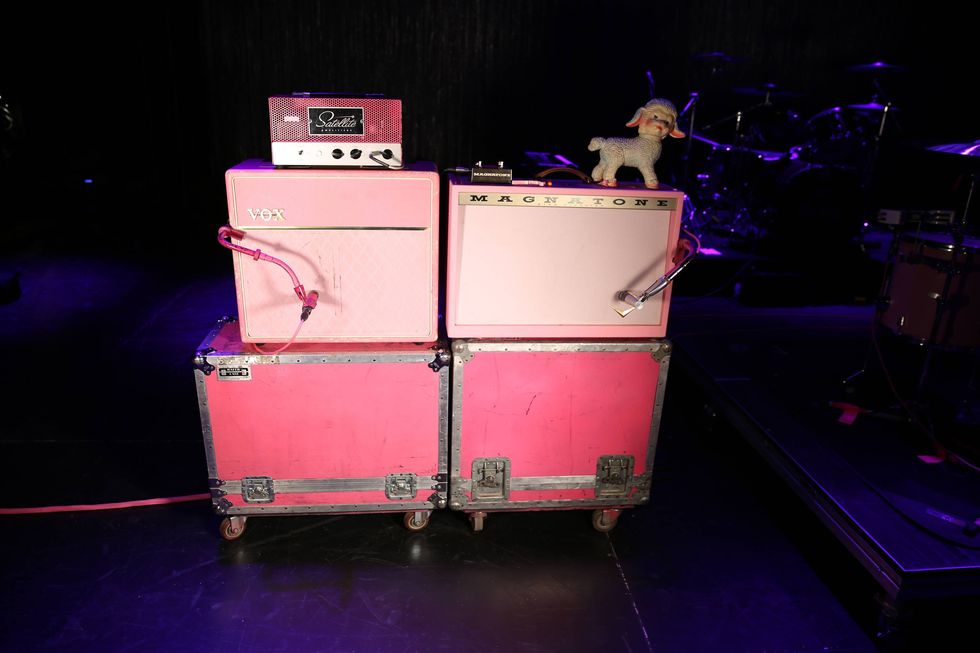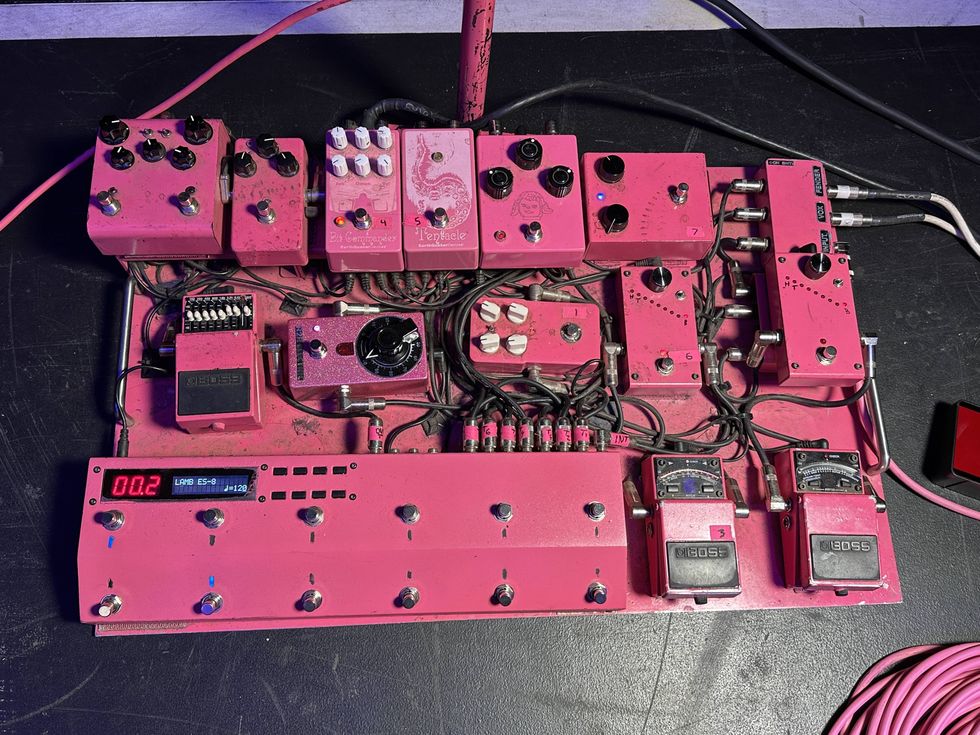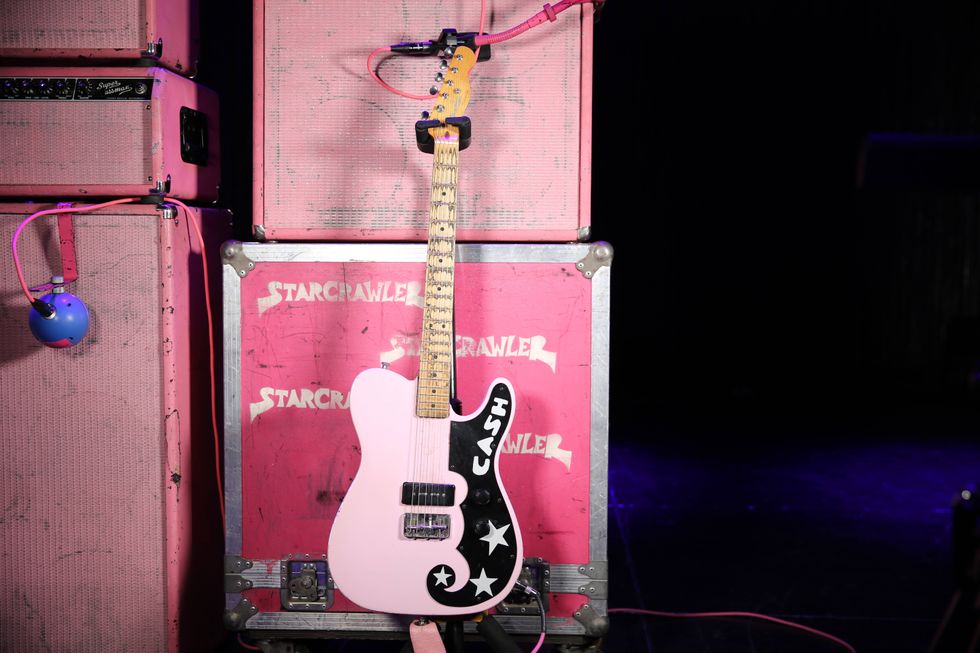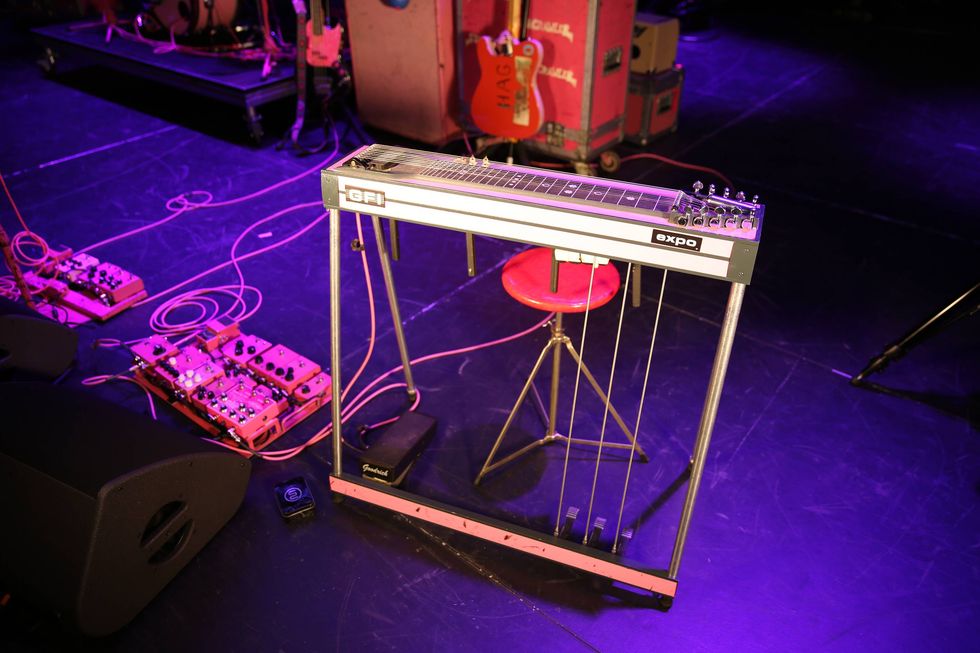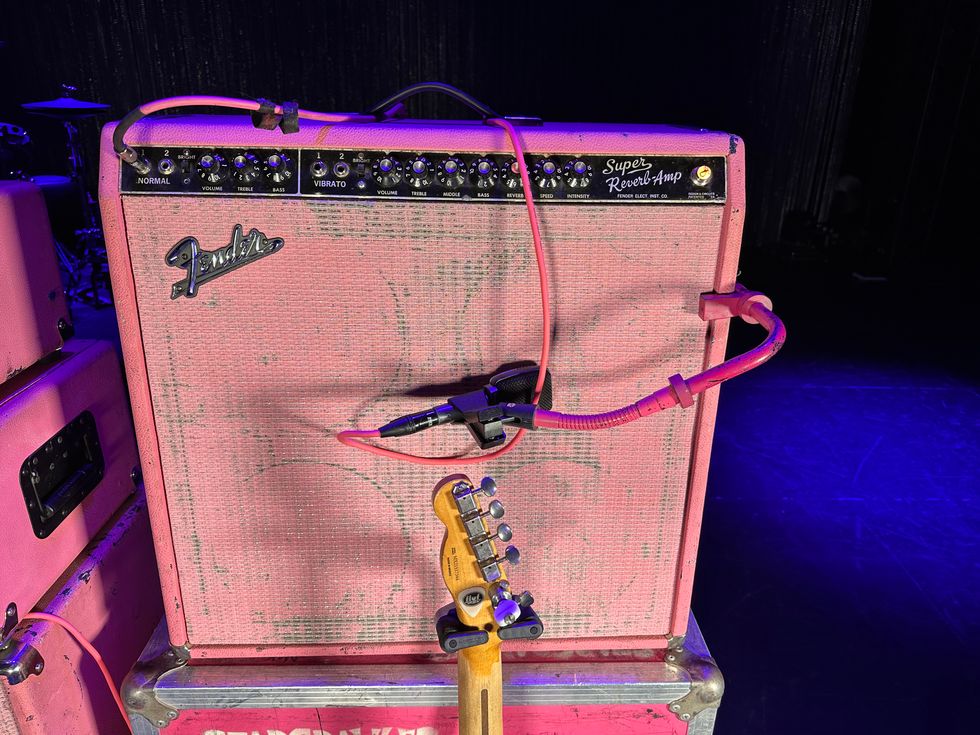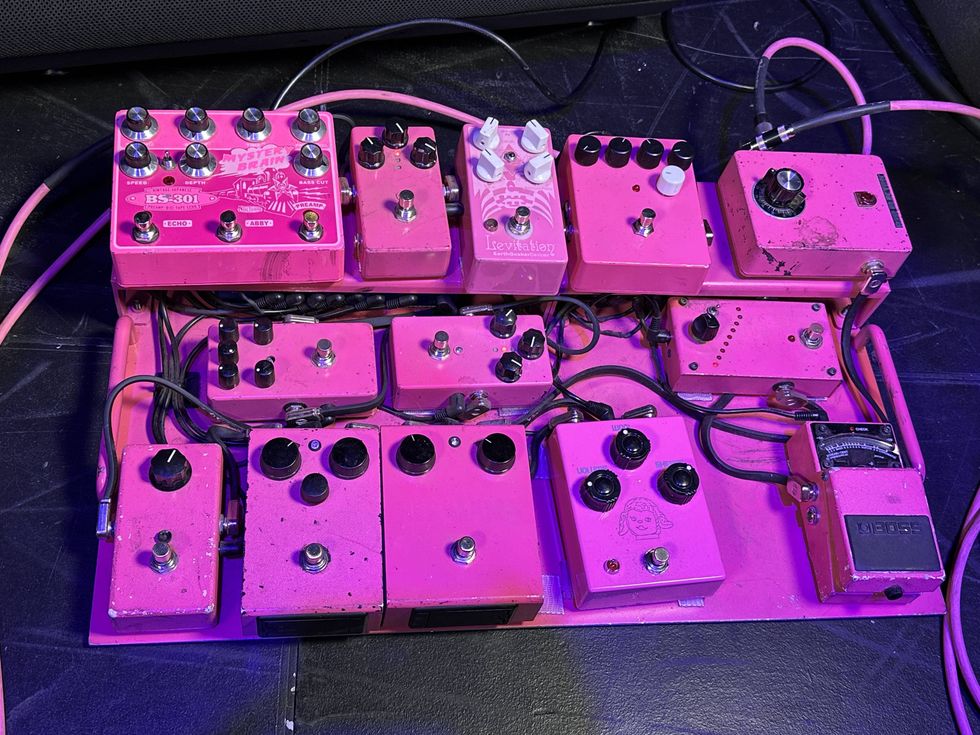Hard riffin’ retro rocker John Notto revs up his Sunset Strip-ready setup. Plus, don’t miss the holy-grail cameo!
Rock ’n’ roll has a long tradition of building on the work of previous stars and reinterpreting their influences. The Beatles honored the Isley Brothers, Elvis covered Little Richard … up to contemporaries like the Black Keys celebrating hill country blues beacons R. L. Burnside and Junior Kimbrough, and Greta Van Fleet echoing Led Zeppelin and Motown. Dirty Honey is reenergizing the hard-rock sound of the 1970s and sleazy Sunset swagger of the 1980s with their amalgamation of heroes that range from Prince and Queen to AC/DC and Guns N’ Roses.
Before Dirty Honey’s headlining show at Nashville’s Marathon Music Works, PG’s Chris Kies popped onstage to witness the power and might of guitarist John Notto’s Appetite-ish assault. Notto shows off a pair of old-soul Les Pauls, explains his intermittent two-amp approach (and where he stole it from), and we enjoy a treat encounter with a very special ’burst.
[Brought to you by D’Addario XS Electric Strings]
It’s a Jimmy Thing
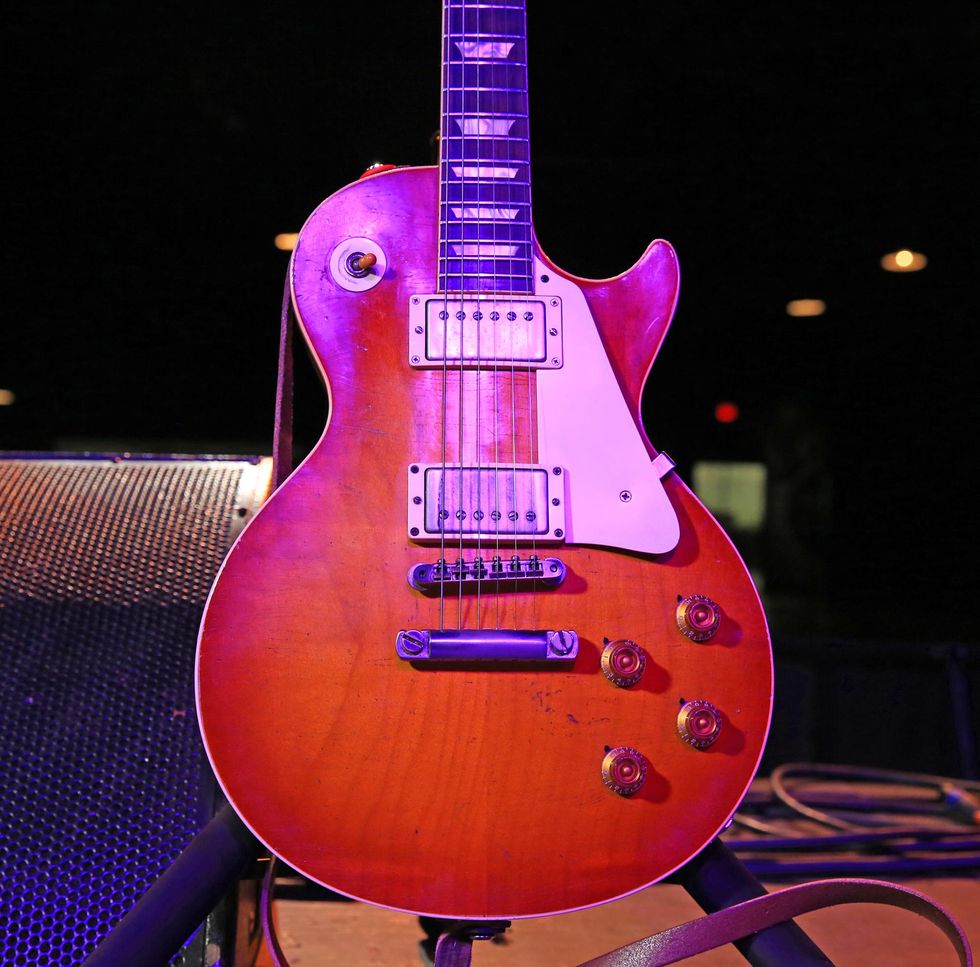
John Notto is an ardent follower of Jimmy Page and Led Zeppelin. (Check out his Hooked video, where he explains how Page’s storytelling riffs still impact his playing.) And while it’s clearly documented that Pagey often played Teles and low-powered amps in the studio, when it came time to rock onstage, he brought out the big guns. Continuing the Les Paul-into-a-Marshall heritage, Notto brings a pair of both on the road. His longtime No. 1 is a 2003 Gibson Custom Shop Historic Collection ’58 Les Paul Standard he bought in 2011. It features both Tom Murphy’s relic’ing handiwork and some natural wear-and-tear applied by Notto himself. The only change he’s made to this ’burst is swapping out the stock pickups for a set of Righteous Sound RAFs that offer a low-output purr, allowing the amp to do the heavy lifting. All his 6-strings take D’Addario NYXLs (.010–.052).
Tobacco Tone

While Notto has owned the ’58 reissue longer and it’s been on more Dirty Honey recordings than any other guitar, he admits that, in the live game, this 2019 Gibson Les Paul Standard ’50s has taken first prize. It was upgraded with Righteous Sound RAF-2s. (Notto says these pickups are a tad hotter, providing more stank, and they have a spike in the 1-3k range.)
Greenie’s Brother
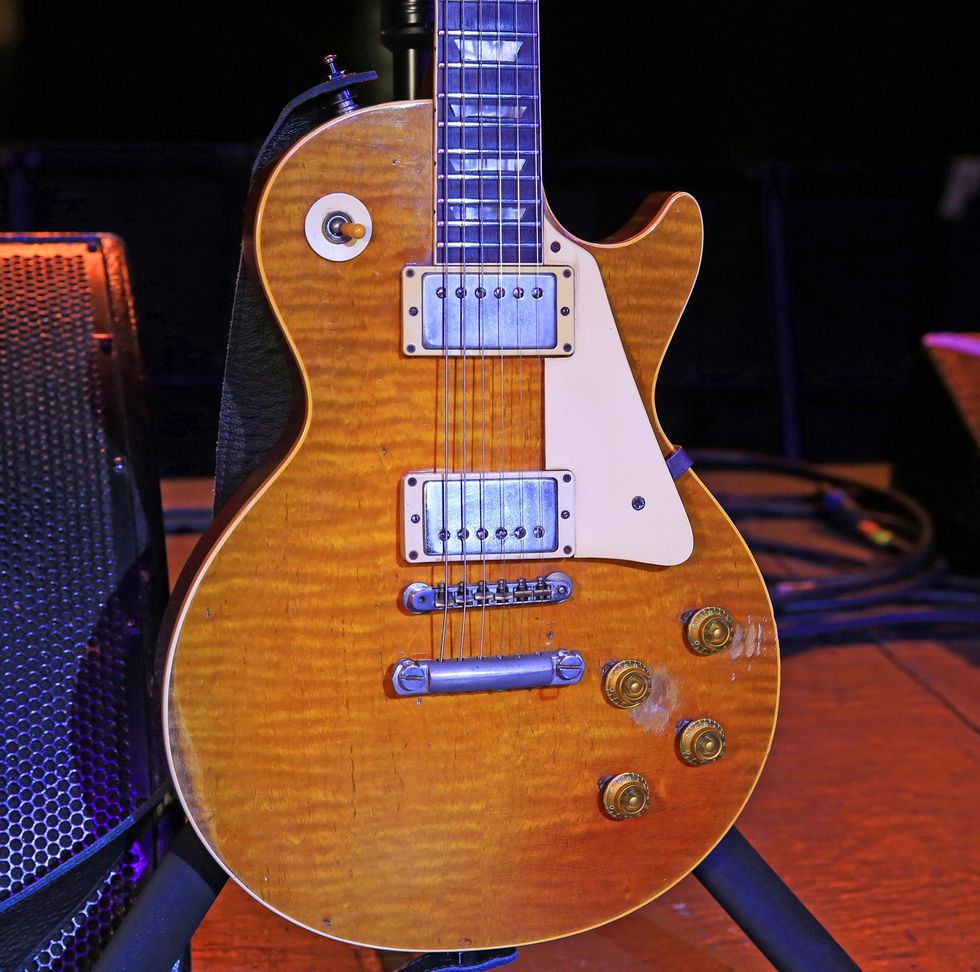
Let’s be clear: This is not John Notto’s guitar. This real-deal 1959 Gibson Les Paul (Gemini 9 2204) belongs to Gibson Brand President Cesar Gueikian. It was lent to Notto for the Nashville gig, and we’re sure Gueikian had private security watching Notto’s every move while it was in his possession. Besides being an iconic instrument from the legendary year, this Gemini started its life on the Kalamazoo workbenches alongside Peter Green’s famous “Greenie” ’burst, as they’re sequential serial numbers. (If we’re splitting hairs, this Gemini was built ahead of Green’s axe. Here you can see a cool photo of Greenie’s current owner, Metallica’s Kirk Hammett, and Gueikian posing with their treasures.) Notto mentions that the playing experience with this ’burst is like controlling an “electric eel,” because it’s so alive and reactive to everything he feeds it. Another takeaway from his time with the guitar is how “notes feed back but still stay sweet and desirable.”
The Real Deal
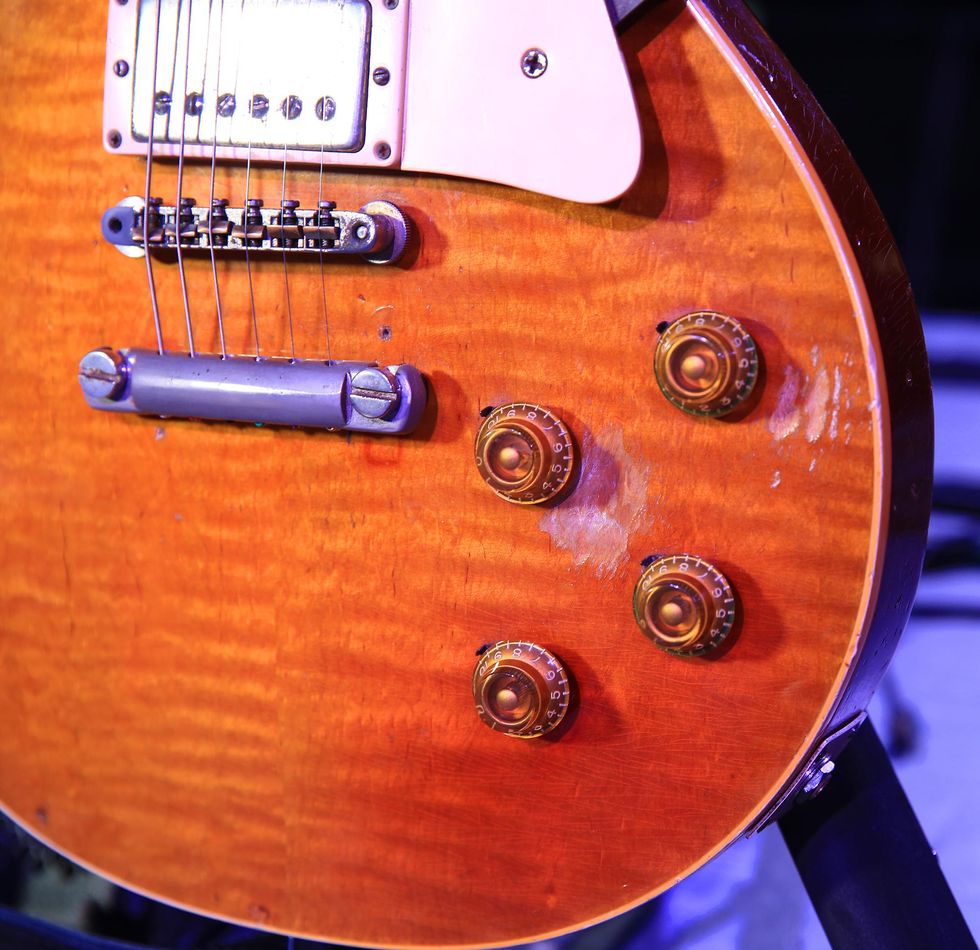
No relic master can match 63 years of aging.
Badge of Pride
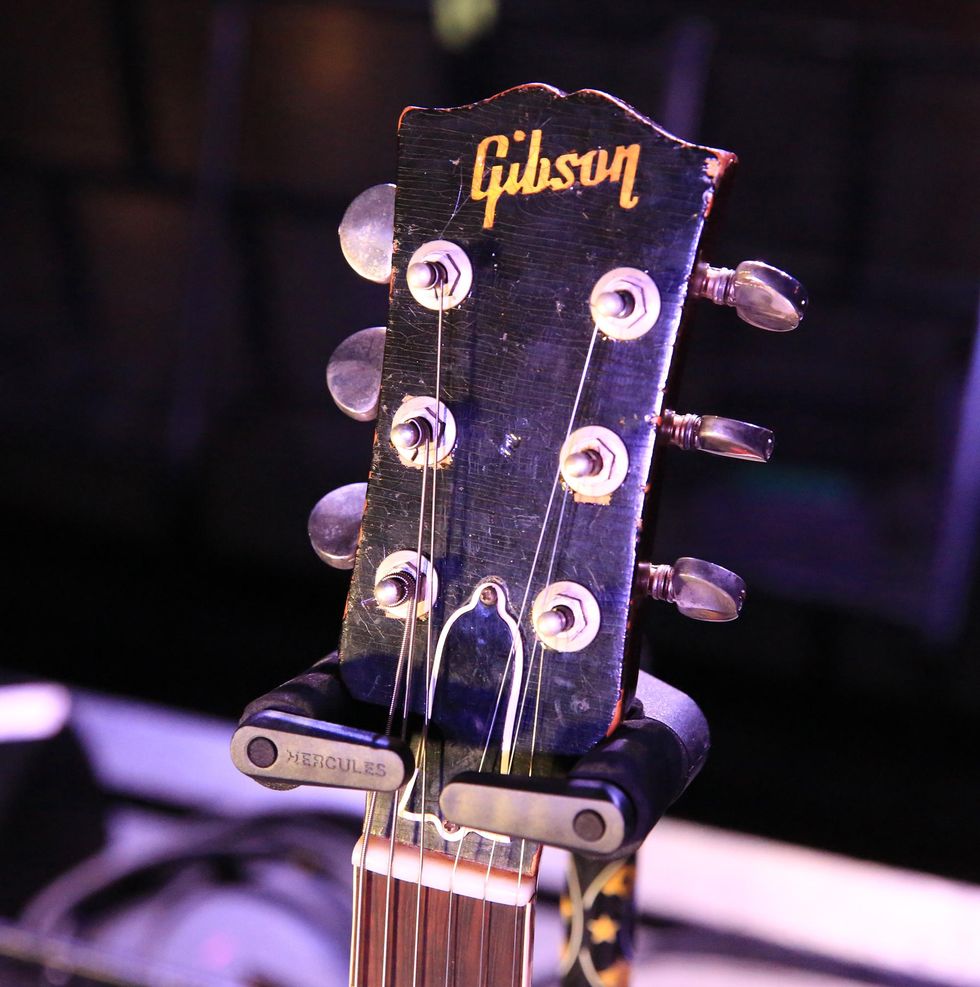
Imagine the stories this headstock could tell if it could talk…. And, in a way, it can.
Marshall, Marshall!
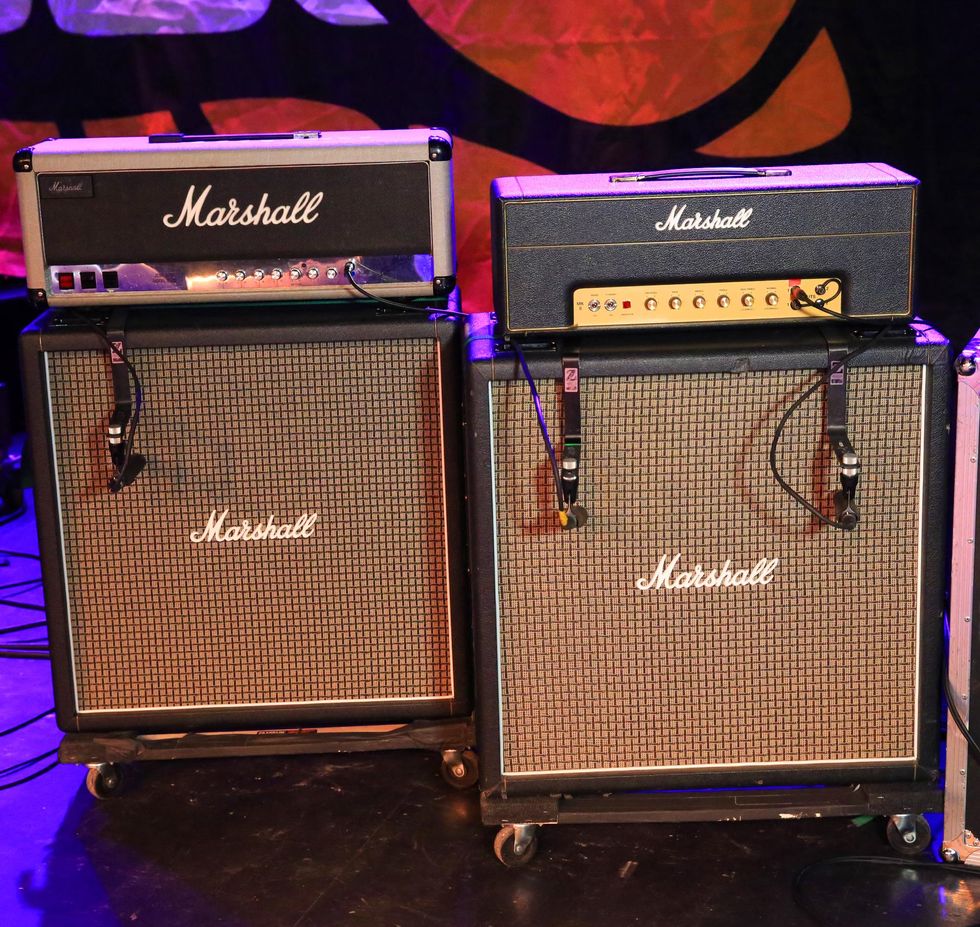
Notto packs a punch when he hits the road. He travels with a potent pair of Marshalls. On the left he has an original 50W 1987 Marshall Silver Jubilee 2550, and on the right, he’s got a 2018 Marshall 1987X that’s essentially a 50W plexi reissue. The 2018 carries the load for most of the show (including taking all his pedals), but whenever it’s solo time, Notto engages (via a Radial BigShot ABY) the Silver Jubilee. He took the amp-for-solos trick from current Black Crowes’ lead guitarist and Earthless leader Isaiah Mitchell, who he saw use this setup when Dirty Honey opened for them in 2021. Both heads hit their own Marshall 1960BX 4x12s, loaded with Celestion G12M Greenbacks (25W).
Main Mule
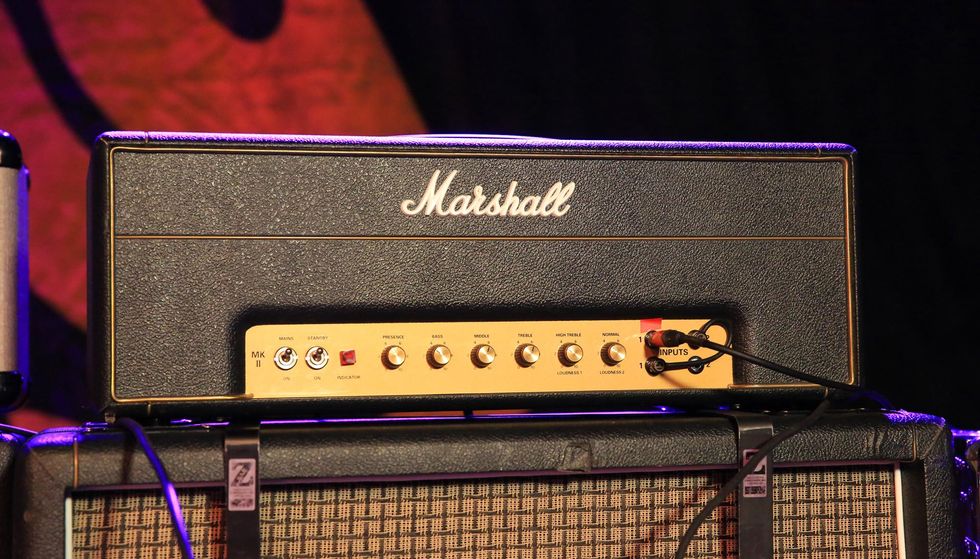
Here’s how he dials in his plexi reissue.
Solo Stinger
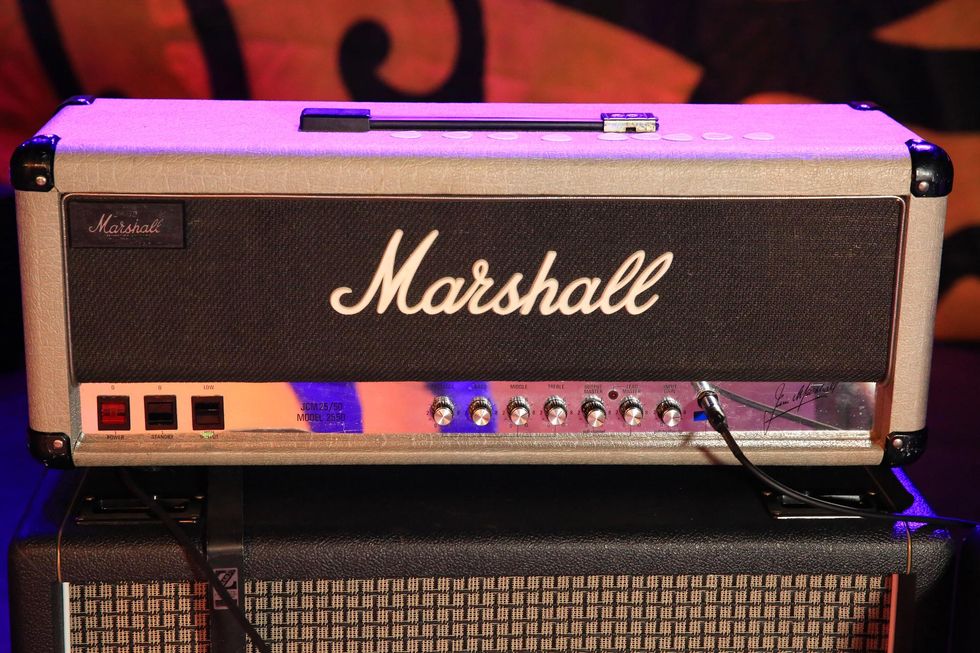
And here’s how the Silver Jubilee complements the plexi when Notto hits the gas and steps into the spotlight.
Pedals for Pleasure
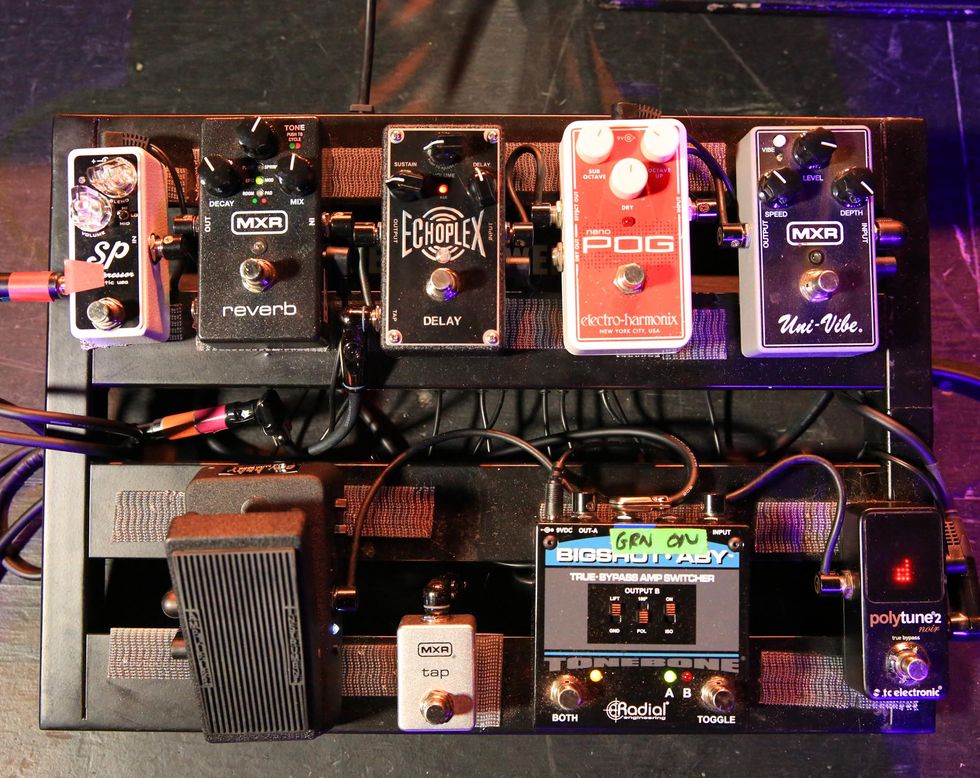
Keeping in the tradition of rock royalty, Notto tours with the essentials (aside from his Electro-Harmonix Nano POG that has the octave-up dialed down a bit and is only used on the band’s cover of Prince’s “Let’s Go Crazy”). The bulk of the night gets colored by four tone-tailoring tools: an MXR Uni-Vibe, MXR Echoplex, MXR Reverb, and an Xotic SP Compressor. The Dunlop 535Q Cry Baby Q Mini Wah gets sprinkled in throughout the set. The Radial BigShot ABY switcher controls the amps, while the TC Electronic PolyTune 2 Noir keeps his guitars in check.




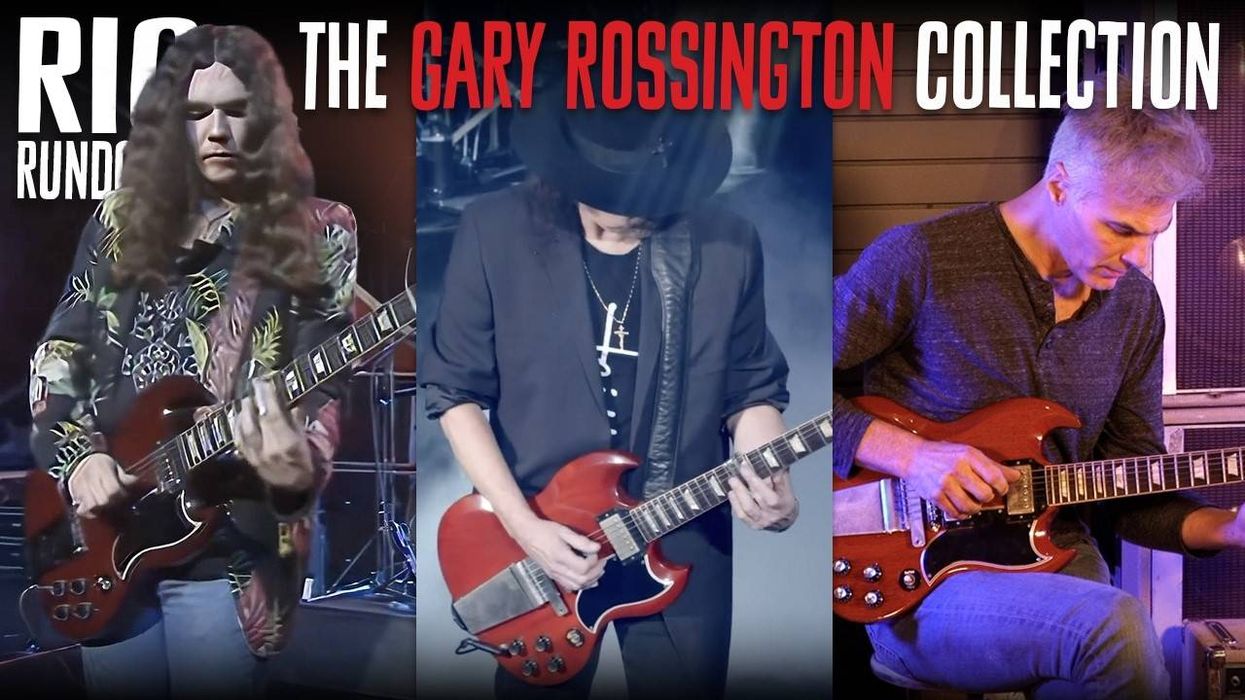
![Rig Rundown: Russian Circles’ Mike Sullivan [2025]](https://www.premierguitar.com/media-library/youtube.jpg?id=62303631&width=1245&height=700&quality=70&coordinates=0%2C0%2C0%2C0)



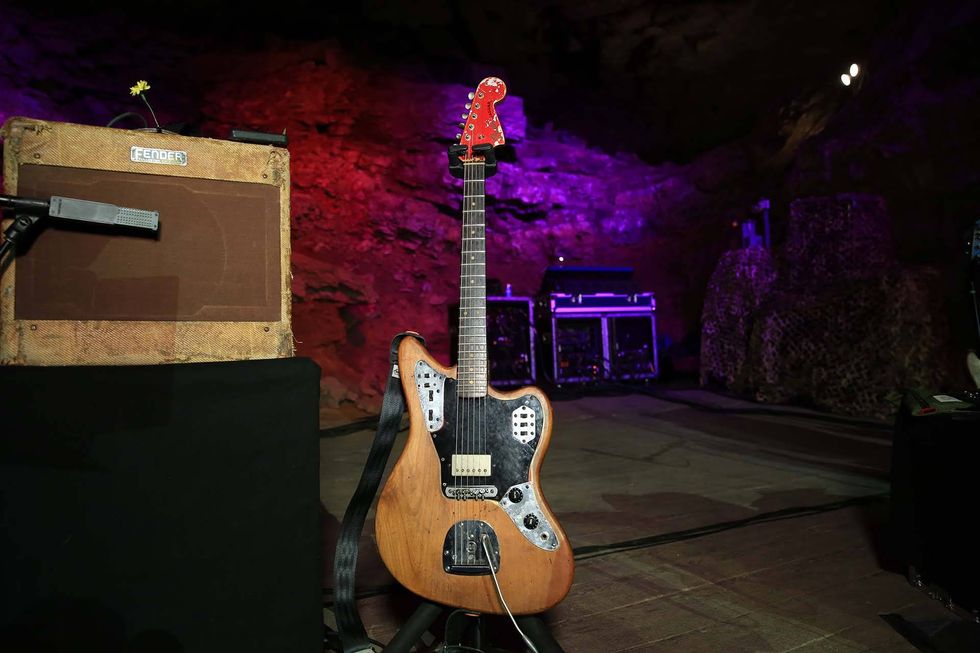
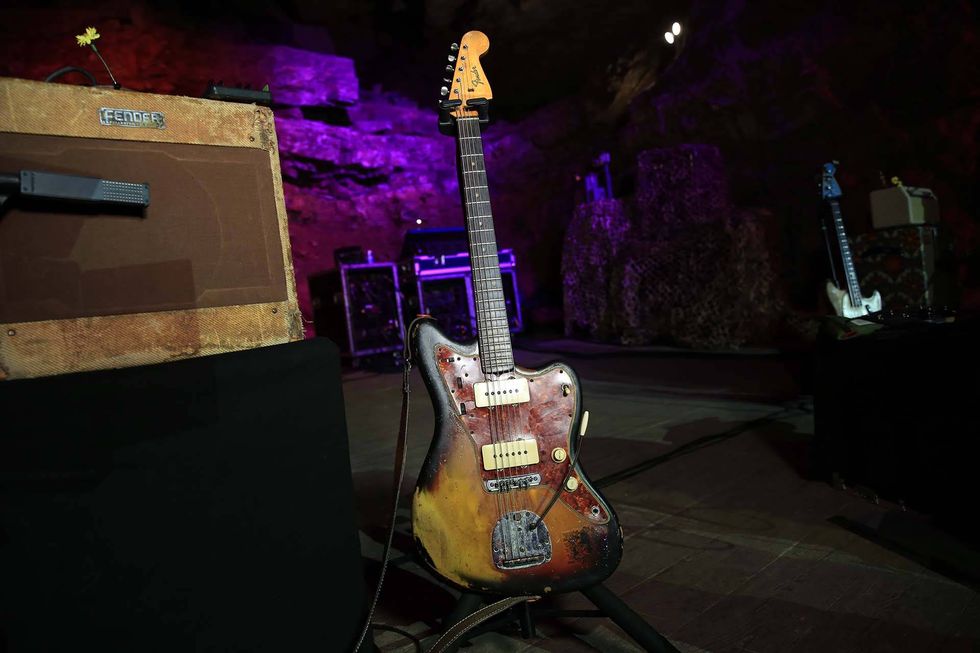
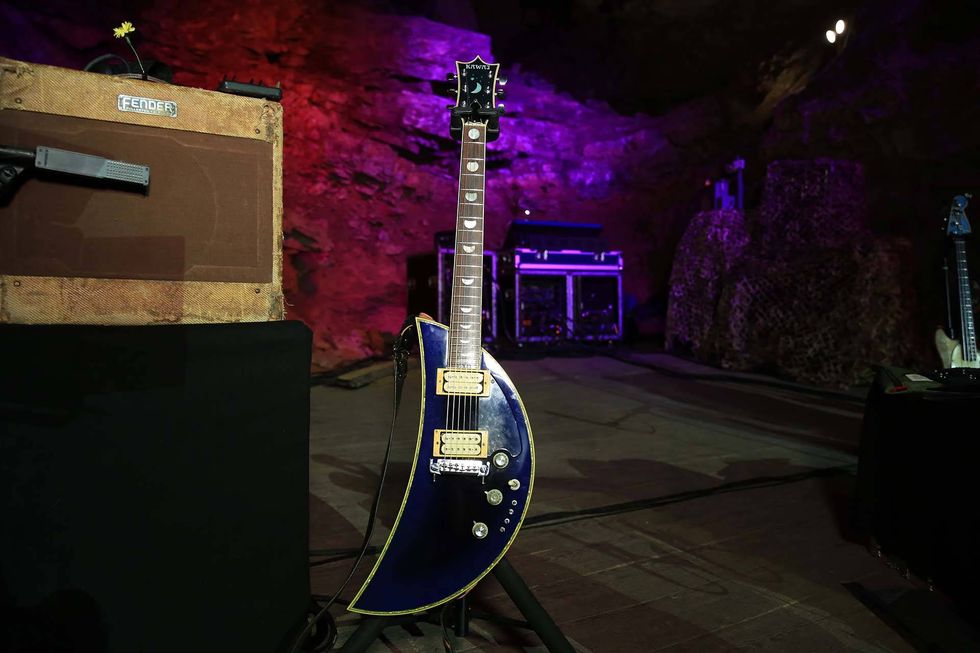
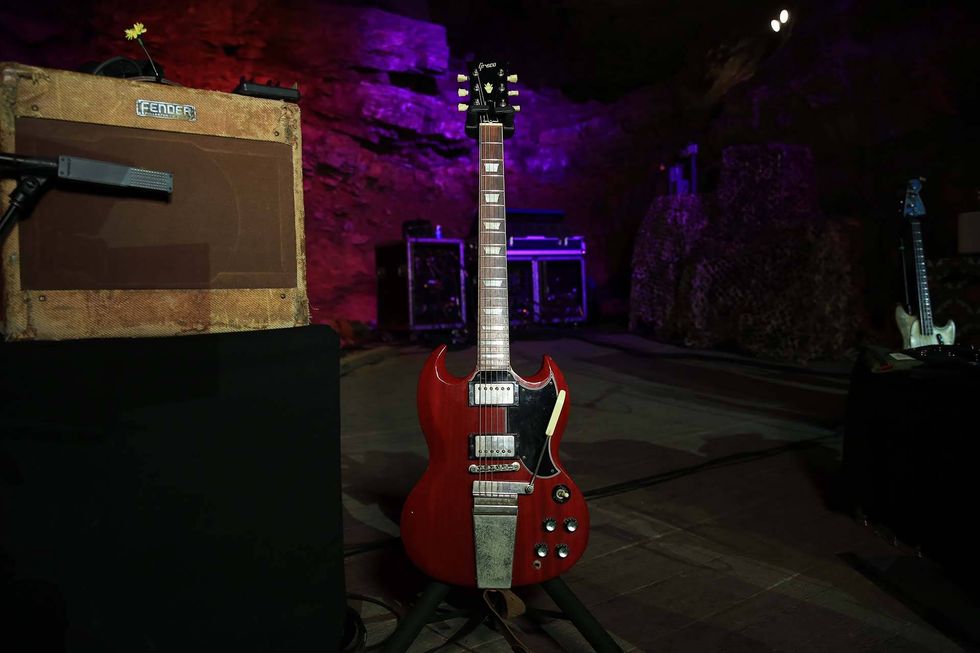
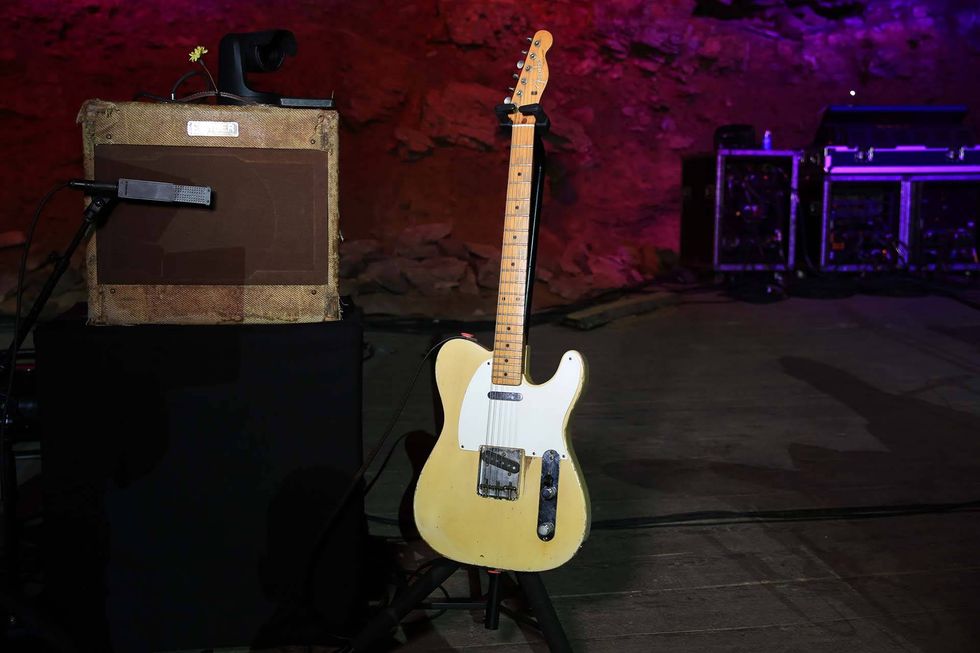
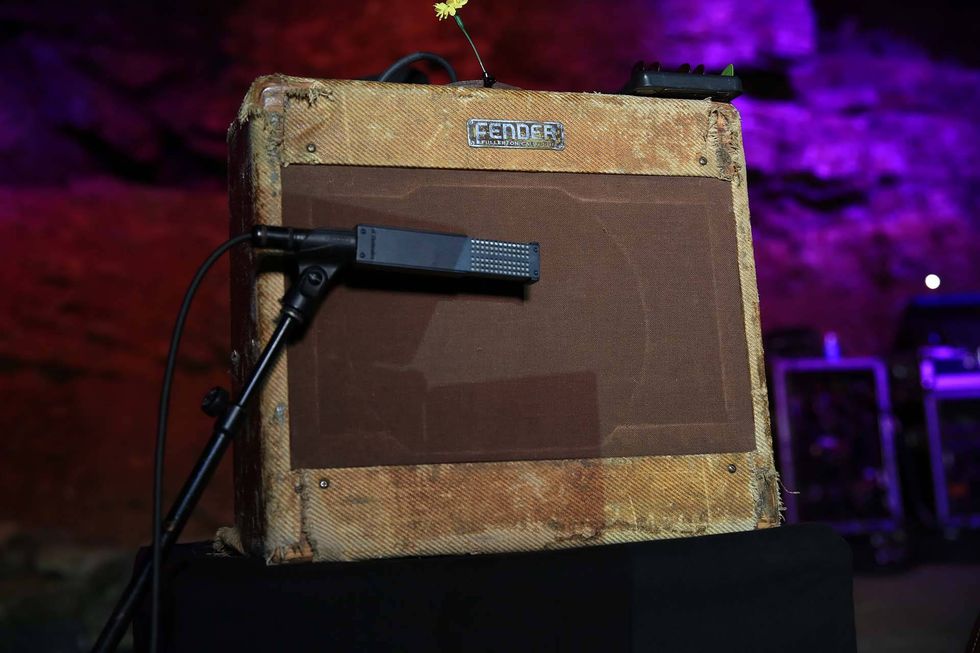
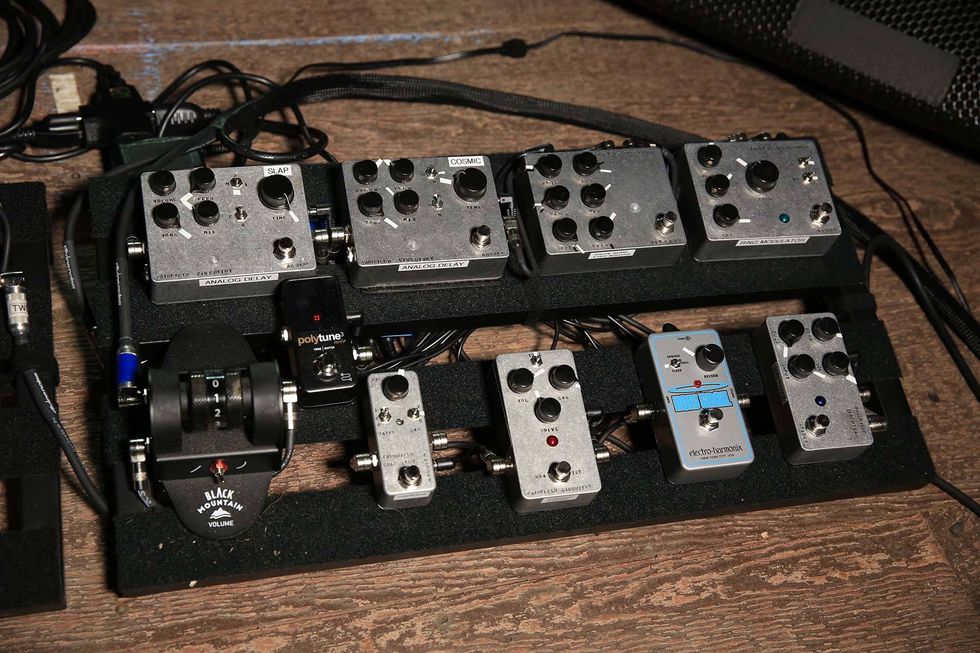


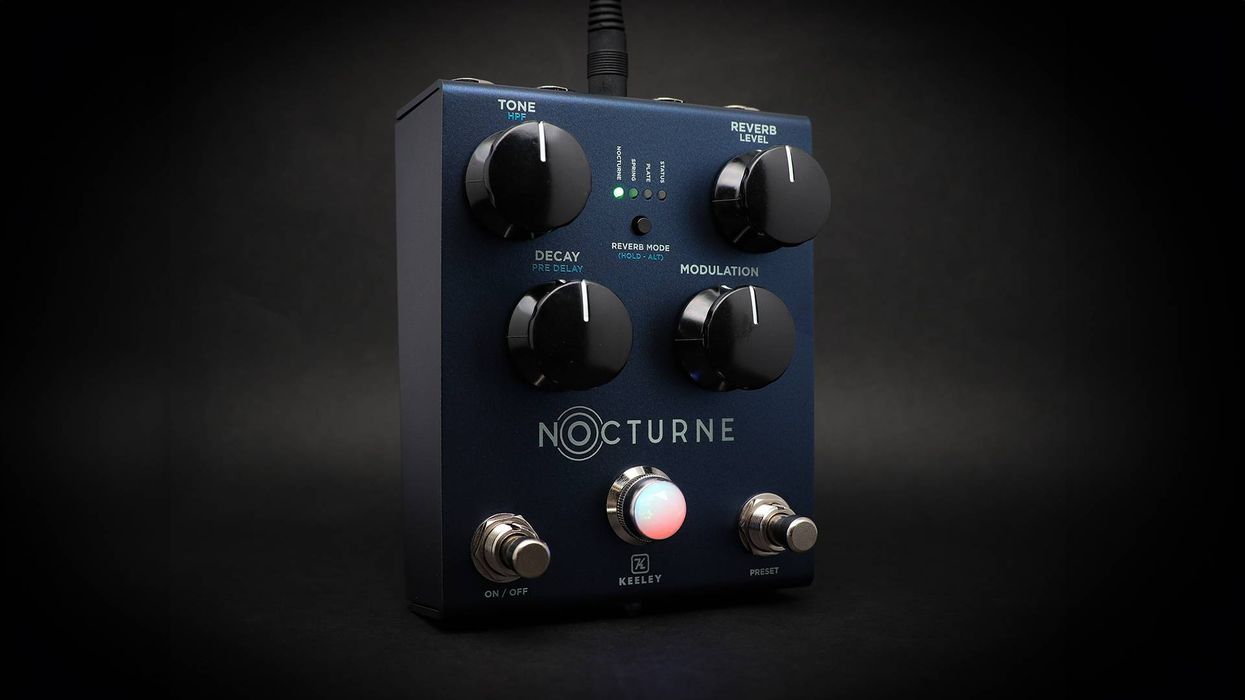

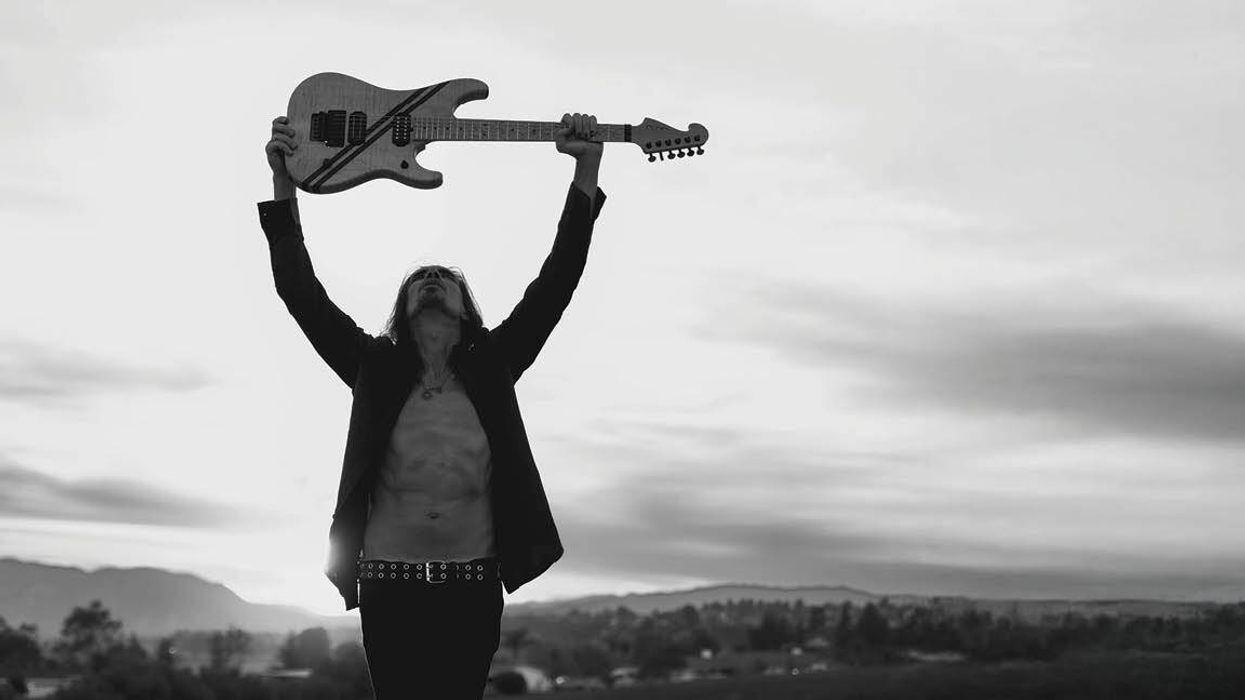

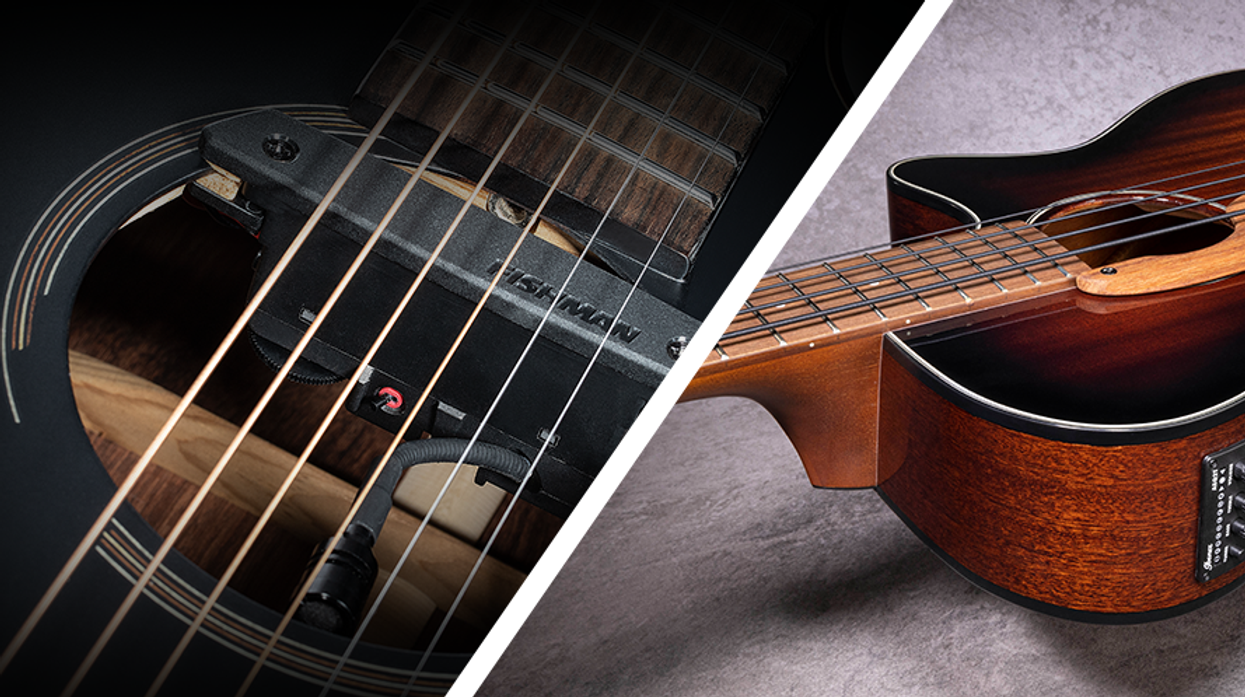


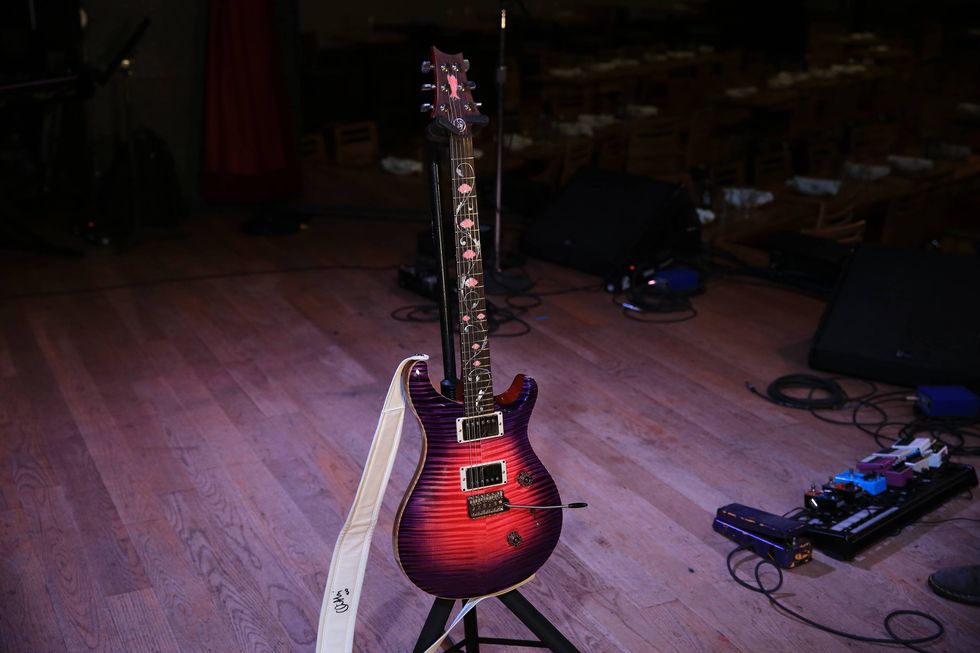
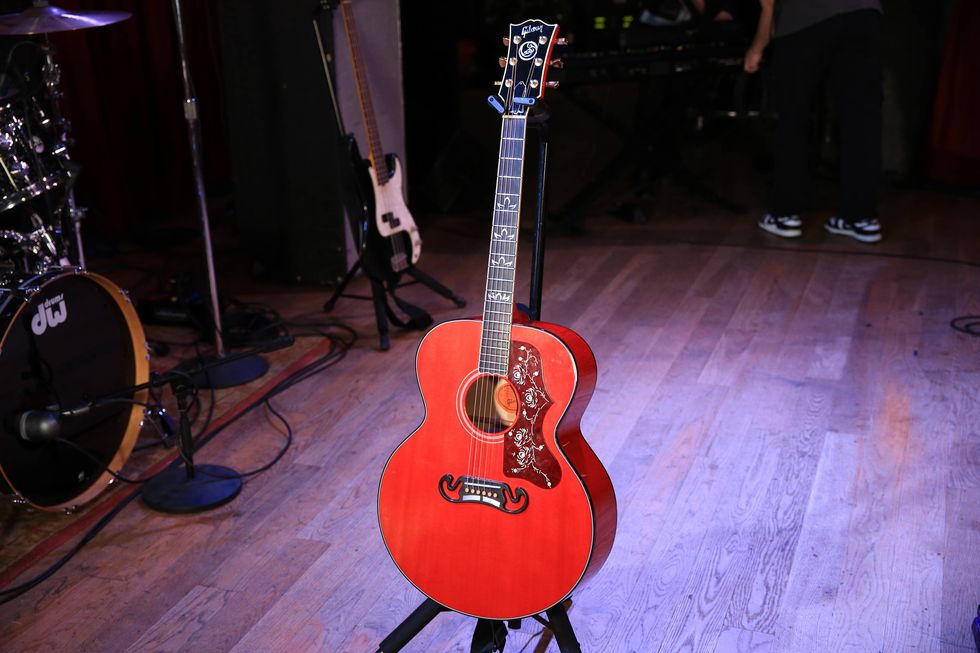
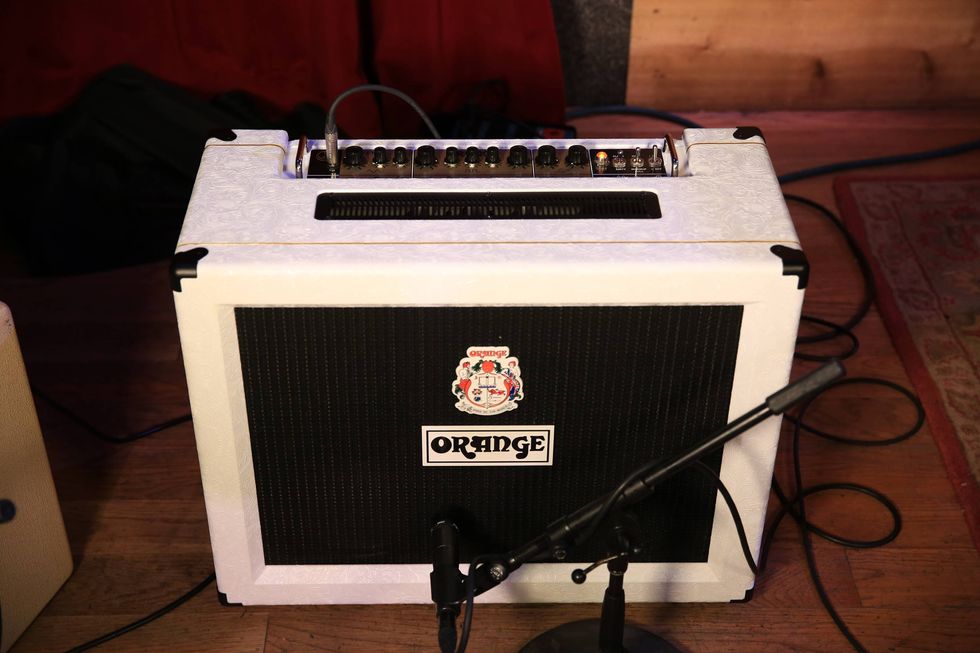
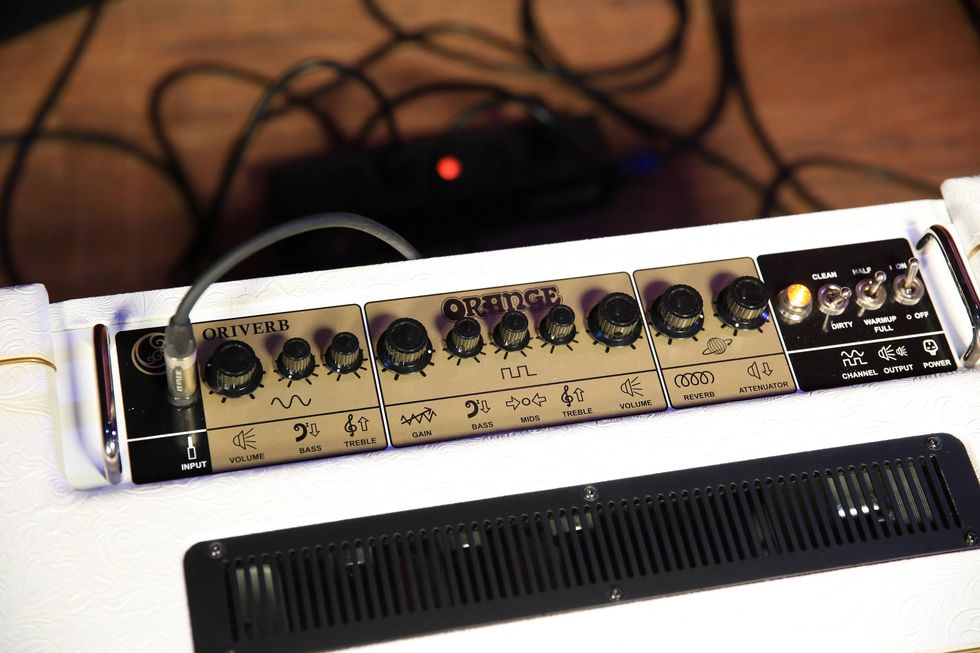
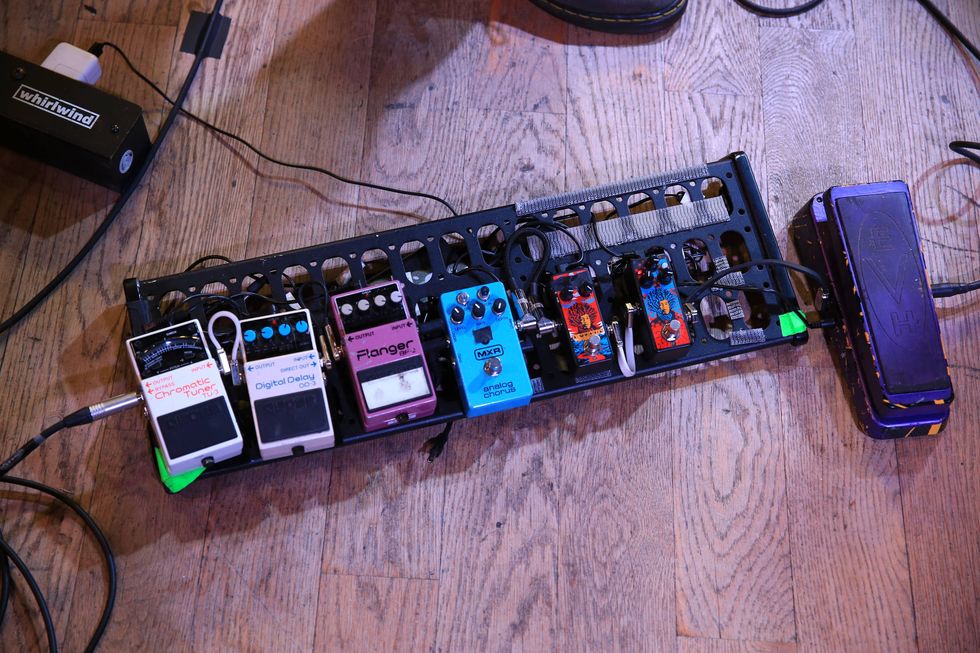

![Rig Rundown: AFI [2025]](https://www.premierguitar.com/media-library/youtube.jpg?id=62064741&width=1245&height=700&quality=70&coordinates=0%2C0%2C0%2C0)




















 Zach loves his Sovtek Mig 60 head, which he plays through a cab he built himself at a pipe-organ shop in Denver. Every glue joint is lined with thin leather for maximum air tightness, and it’s stocked with Celestion G12M Greenback speakers.
Zach loves his Sovtek Mig 60 head, which he plays through a cab he built himself at a pipe-organ shop in Denver. Every glue joint is lined with thin leather for maximum air tightness, and it’s stocked with Celestion G12M Greenback speakers.







